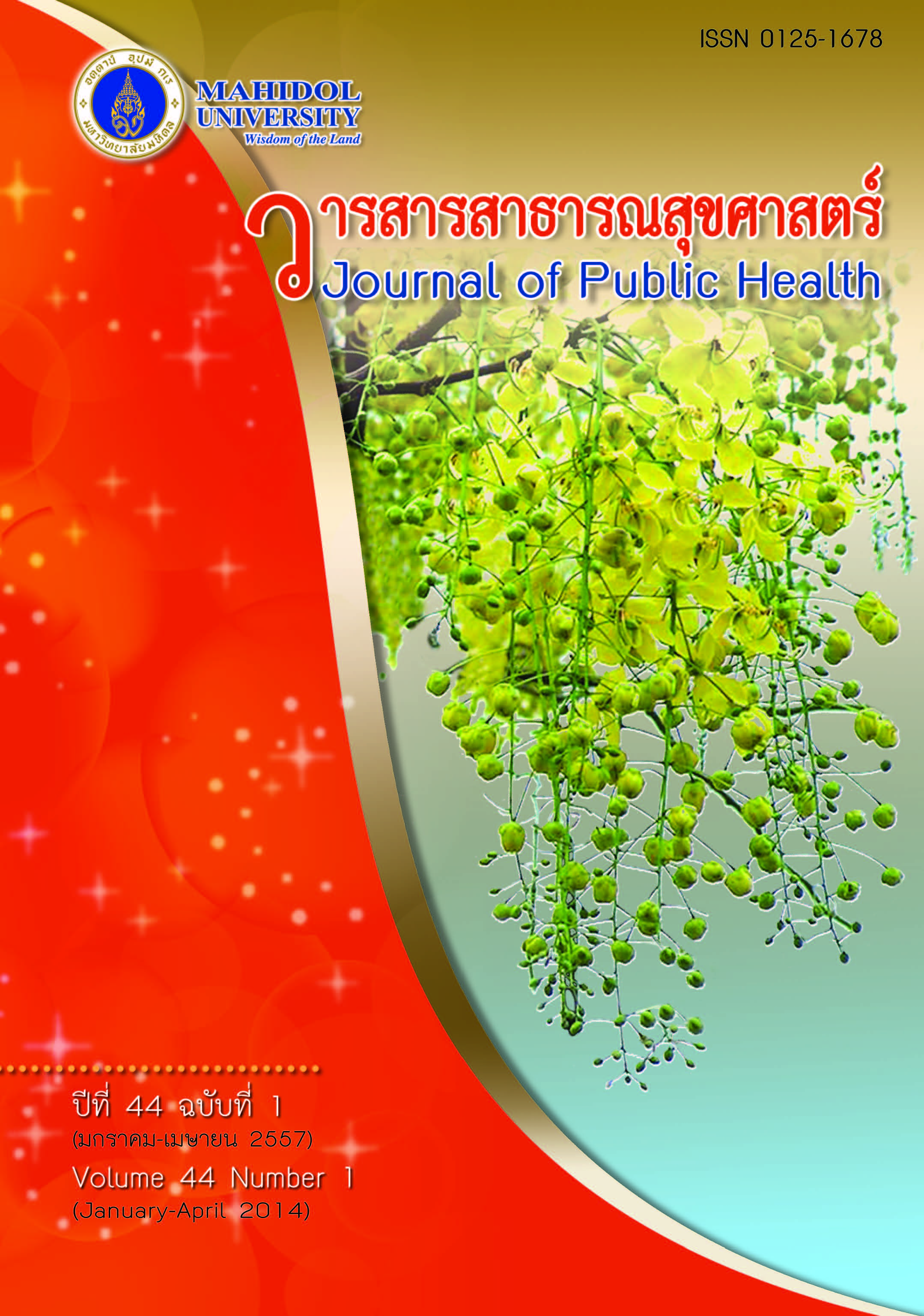ความแตกต่างของสารอาหารที่ได้รับในเด็กก่อนวัยเรียนที่มีภาวะโภชนาการต่างกัน
Keywords:
ปริมาณสารอาหาร, เด็กก่อนวัยเรียน, ภาวะโภชนาการ, กลุ่มอาหาร, Nutrient intake, preschool children, nutritional status, food groupAbstract
บทคัดย่อ
ภาวะอ้วนในวัยเด็กอาจเพิ่มความเสี่ยงของภาวะอ้วนในวัยผู้ใหญ่ เพื่อให้ทราบถึงสารอาหารที่ได้รับและวางแผนป้องกันภาวะอ้วนในเด็ก จึงเปรียบเทียบสารอาหารที่ได้รับของเด็กก่อนวัยเรียนที่มีภาวะโภชนาการต่างกัน จำแนกเป็น 4 กลุ่ม คือเด็กเตี้ย ผอม อ้วน กลุ่มละ 30 คน และปกติ 47 คน ทำการศึกษาแบบภาคตัดขวางในเด็ก 137 คนจากศูนย์พัฒนาเด็กเล็ก 15 แห่ง ชั่งน้ำหนัก วัดส่วนสูง สัมภาษณ์อาหารย้อนหลัง 24 ชั่วโมง ในวันทำการและวันหยุด เปรียบเทียบความแตกต่างของสารอาหารที่ได้รับของกลุ่มตัวอย่าง 4 กลุ่ม ด้วย analysis of variance (ANOVA) หรือ Kruskal Wallis test และ สารอาหารในวันทำการและวันหยุดด้วย paired t test ผลการศึกษาพบ ค่าเฉลี่ยพลังงานต่อวันต่อคนของทั้ง 4 กลุ่มไม่มีความแตกต่างกัน (p >0.05) เด็กเตี้ยได้รับโปรตีนน้อยกว่าเด็กปกติและเด็กอ้วน (p < 0.01) พลังงานจากกลุ่มอาหารหลักของเด็กเตี้ยน้อยกว่าเด็กอ้วน (p < 0.05) อาหารกลุ่มนมเด็กผอมได้รับน้อยกว่าเด็กปกติและเด็กอ้วน (p < 0.01, p < 0.05) เมื่อเปรียบเทียบสารอาหารในวันทำการและวันหยุด เด็กเตี้ยและปกติได้รับแคลเซียมในวันทำการมากกว่าวันหยุด (p < 0.05, p < 0.01) เด็กอ้วนได้รับโปรตีนในวันทำการมากกว่าวันหยุด (p <0.01) ดังนั้นจึงควรพิจารณาสารอาหารตามกลุ่มอาหารในการพัฒนากลยุทธ์ทางโภชนาการเพื่อให้เด็กมีภาวะโภชนาการที่เหมาะสม
Differences in Nutrient Intake by Nutritional Status among Preschool Children
ABSTRACT
Childhood obesity is known to increase risk of obesity during adult life. Having a thorough understanding of dietary patterns from preschool may contribute to the success of an obesity prevention strategy. A cross-sectional study was conducted on 137 preschool children in 15 daycare centers to investigate the differences in nutrient intake by nutritional status. Weight and height were measured. We recorded 24-hour dietary recalls on both weekday and weekend days. Nutrient intakes by nutritional status were compared using ANOVA or Kruskal Wallis test. Differences in nutrient intakes between weekdays and weekends were compared using paired-t test. The findings revealed that the average daily energy intake was not different between groups (p > 0.05). Protein intake was lower in stunted children than in normal and obese children (p < 0.01). Classifying food into food groups revealed that energy intake from main dishes was lower in stunted children than in obese children (p < 0.05). Energy intake from dairy products was lower in thin children than in normal (p < 0.01) and obese children (p < 0.05). Calcium intake was higher during the weekday than during the weekend for stunted (p < 0.05) and normal children (p < 0.01). Protein intake was higher during the weekdays than during the weekend for obese children (p < 0.01). These findings suggest that nutrient intake by food groups should be considered when developing nutritional strategies for optimal childhood nutrition.
Downloads
Issue
Section
License
Creative Commons License CC-BY-ND


